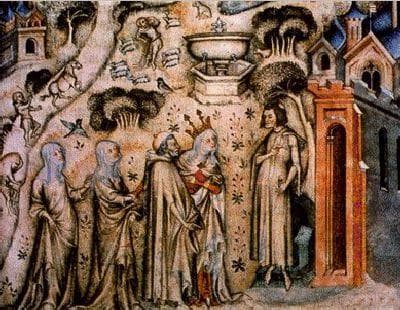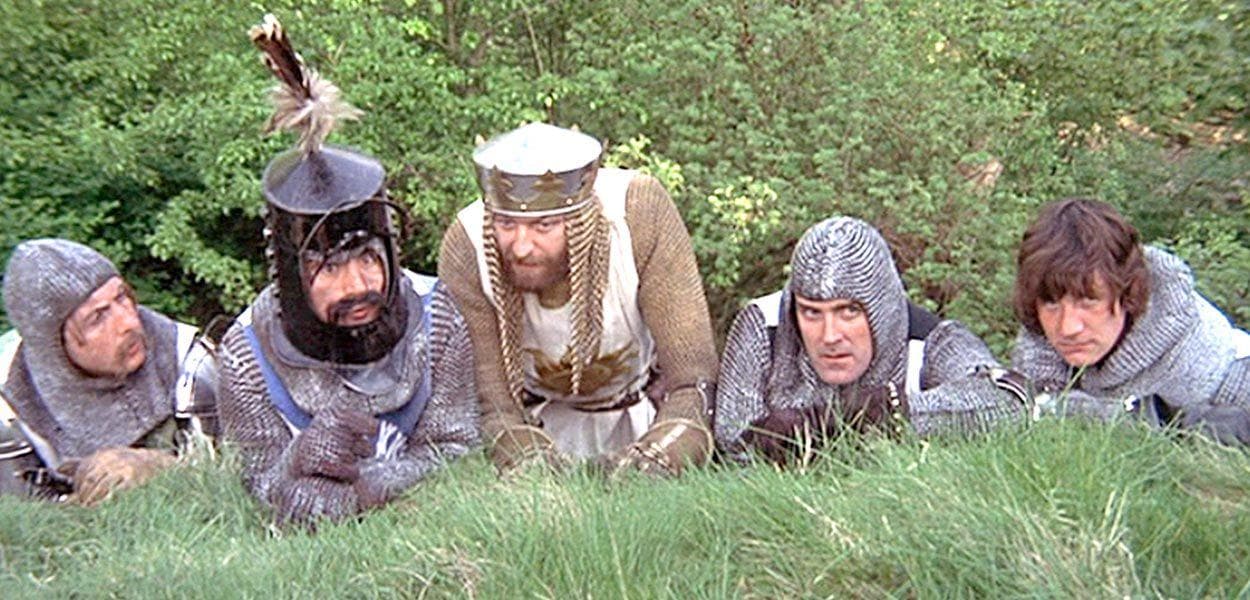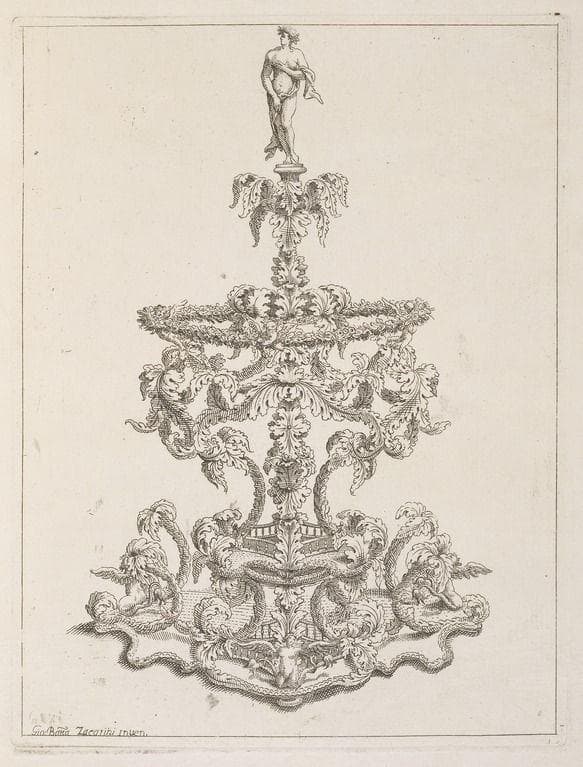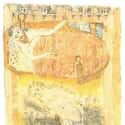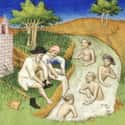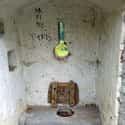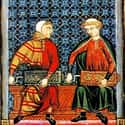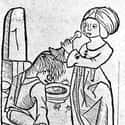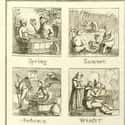-
(#1) Bathing Was Highly Encouraged, But It Was A Luxury
While bathing was recognized as important during the medieval period, the practice also proved challenging depending on a person's location and resources. Groups like the Vikings were particularly interested in cleanliness and bathed for religious and medicinal purposes. Monks and nuns also bathed at their respective houses, often as part of a ceremonial practice.
Bathhouses and communal bathing were common - held over from the Romans in many areas - but many residences also had bathing facilities of their own. That said, having a place to bathe was often associated with wealth, and even with a makeshift bathtub on site, a full-body washing wasn't a daily practice.
Commoners were more likely to bathe in springs, streams, and other water sources near their homes. This meant they were vulnerable to weather and rarely, if ever, bathed in anything other than cold water.
-
(#2) Hands Were Washed Several Times A Day
While full-body baths were somewhat infrequent, medieval folk did recognize the importance of clean hands and a clean face. Hands were washed before eating as part of Christian and Jewish ritual practices. People also washed their hands after meals, given how much food was consumed without utensils.
Those dining at elaborate medieval residences were required to clean their hands upon entry. An aquamanile - a hand-washing basin whose name derives from the Latin words for water and hand - could be both decorative and practical, and often featured elaborate animal imagery. Soap may have been used, but the entire hand-washing process often consisted merely of a quick rinse and dry.
-
(#3) Women Commonly Washed Their Hair Every Saturday
The regularity with which women bathed during the medieval period varied, but hair-washing took place regularly. Often a task reserved for Saturdays, women washed their hair to "rinse away all the dust and grime that may have accumulated through the course of the past week's labors."
Peasants and commoners may have washed their hair less often, but regardless of regularity, the process was very involved and may have required assistance. Women would remove their clothes from the waist up and have water poured over their heads using a pitcher of water and a basin. If available, a pseudo-shampoo made from oils, herbs, and minerals was applied and rinsed out.
-
(#4) Cheap Lye Soap Was Often Made And Used Domestically
Soap was made from a variety of substances during the medieval period. A mixture of lime and salt was often used to form an alkaline substance, and other recipes included potash from wood ashes mixed with lard or oil - Northern Europe often used lard, while those in the Mediterranean opted for oil. Soap could be molded into cakes, balls, or bars, and - depending on the user's wealth - could include scents such as lavender.
Soaps with high lye content were quite harsh and could remove skin as easily as they could grease. These soaps were much cheaper than oil-based soaps, however, given the necessity of fats and oils in cooking. Those who could neither afford soap nor make their own often used soapwort, a flower with natural cleansing properties.
-
(#5) Bathing Was Often Communal, Both In Public And Private
Bathing in public - whether in a stream or at a bathhouse - was performed as a communal activity. Even private bathing involved other people during the medieval period. The process of preparing a bath for a medieval castle-dweller involved someone hauling water from a nearby water source; once enough water was poured into the tub, it had to be heated. As the entire process required significant energy and expense, more than one person would often take advantage of the bathing opportunity.
In some instances, bathers even had an attendant or servant to refresh their hot bathwater, similarly preventing any solitude while bathing.
Baths were also associated with sensuality. Boccacio wrote about one such shared bath, which featured a widow with whom Marchese Azzo of Ferrara bathed regularly, as well as a young merchant named Rinaldo d'Asti. According to the tale, the lady heard Rinaldo groaning from the cold outside of her room and found him "shivering all over." She asked him to "step into [her] bath, which [was] still warm." After doing so, he dined with her before joining her in bed.
-
(#6) Teeth Were Often Cleaned With Twigs, Wine, And Mallows
The importance of clean teeth and fresh breath didn't go unnoticed in the medieval world. Picking food out of one's teeth was accomplished with whatever was on hand, but the earliest toothbrushes were made from twigs - particularly hazel - with one end wrapped in cloth.
As an alternative to brushing, some people cleaned their teeth by chewing on mallows, which are plants that grow in marshy areas. People also chewed on mint leaves or fennel and anise seeds, or rinsed their mouths with water or wine mixed with vinegar.
-
(#7) Human Waste Was Disposed Of In Cesspits
Although running water as it is used today didn't exist in the medieval era, monasteries often featured latrines. These were toilets built over streams and other water sources to literally flush out the waste. The latrines were sometimes placed over pits located on higher ground so they could drain into nearby rivers and streams.
People also relieved themselves using cesspits, which were holes lined with stones or wooden planks. These were covered when not in use to prevent odors from wafting. Many castles featured similar structures - such as privy chambers, garderobes, and necessaria - and could include a dozen wooden seats with ventilation and water access.
Outhouses were also utilized, but if a person couldn't find a place to relieve themselves, a nearby cesspit was always an option. Emptying a chamberpot into a local cesspit was another way of discarding of human waste.
-
(#8) Water Was Often Undrinkable Due To Unregulated Water Sources
Water that supplied medieval castles and cities was also used to remove waste, which threatened the safety of the water source itself. Finding adequate drinking water from a river or stream was challenging given the amount of waste in cesspools.
Many cities responded by bringing in fresh spring water to meet the public's needs. Wells were equally problematic, especially as populated areas expanded and groundwater became contaminated.
Cities such as Siena attempted to regulate access to public water sources, allowing only laundries, inns, and public bathhouses to pull from them directly. This proved ineffective, however, when city residents began throwing waste out of their windows and "washing their clothes in [public conduits] and dumping other filth, with the result that fountains and the water supply were being spoiled."
In the end, most people didn't drink water during the medieval period, instead opting for ale, beer, or wine. Water was thought to be a drink for the lower classes and was feared for its impurity. By the 11th century, however, people began to have difficulty finding clean water for cooking and other uses.
-
(#9) Shaving Was Performed In Pairs
While mirrors did exist in the Middle Ages, they were cloudy and very small, meaning shaving was often a joint activity for commoners. Visiting the local barber - who was also usually the local surgeon - was preferable to removing one's own facial hair with a sharp blade.
Monks helped one another shave in order to maintain their tonsures. Shaving took place at specific times of the year and was sometimes done communally, although a monk in need of purification may have been shaved more often.
Women relied on plucking or depilatories for hair removal. Eyebrows and hairlines were tweezed, and substances such as walnut oil, vinegar, and even dried cat waste were used to remove hair.
-
(#10) Lice And Fleas Were Pervasive
The medieval world was plagued by lice and fleas - miniscule creatures found in bedding, clothing, and hair. Even the most wealthy of medieval aristocrats and holiest of monks fell victim to bugs - St. Francis of Assisi was said to have called fleas and lice "pearls of poverty" - and delousing was common.
Delousing was usually carried out by women and often "[took] place in bed, or by the fire, at the window or on the shoemaker's bench." Raymonde Guilhou was deloused "in full view of everybody in the doorway of the 'ostal' [hospital]." Women would brush or comb parasite-infested hair with implements resembling brooms.
-
(#11) People Followed Daily Hygiene Regimens
Salerno medical school, one of the major medical schools in medieval Europe, published a guide for healthy, hygienic living in the 12th or 13th century. Drawn from classical texts like those of Hippocrates and Galen, as well as Arabic works, Regimen Sanitatis Salernitanum included healthy diet advice, headache remedies, and even morning health disciplines. According to the Regimen:
In the morning upon rising, wash your hands and face with cold water; move around awhile and stretch your limbs; comb your hair and brush your teeth. These things relax your brain and other parts of your body.
Baths were advised - albeit in moderation - to counteract the effects of exercise, laxatives, and sweating. Other treatises like the Secret des secrets, translated into Latin during the 14th century, advised baths during certain times of the year, but also cautioned that staying in a bath for too long could make a person "feeble."
New Random Displays Display All By Ranking
About This Tool
The Middle Ages has almost always been called the "Dark Age" in history, but most rumors about hygiene are wrong, developed water supply and sanitation systems were built in the city, the government at that time also paid attention to the disposal of garbage and excrement. The sanitary facilities of some luxurious medieval castles are still high-level even in modern society.
Except for the complete social health protection system, the people in the Middle Ages also paid attention to body cleanliness, and their hygiene concepts and habits were very advanced. Have you ever dreamed live in medieval castles? The random tool introduced 11 details about what was hygiene like in medieval castles.
Our data comes from Ranker, If you want to participate in the ranking of items displayed on this page, please click here.



